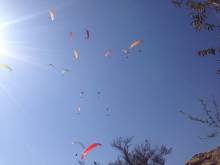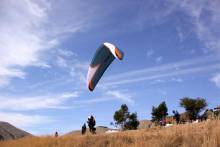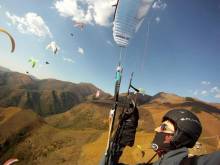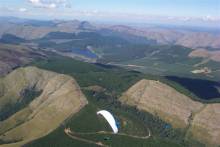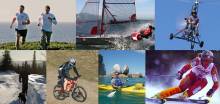Past Tasks
|
01/07/16
Canceled
|
|
30/06/16
Task Distance: 35 km
|
Finished 
|
|
29/06/16
Task Distance: 35 km
|
Finished 
|
|
28/06/16
Task Distance: 40 km
|
Finished 
|
|
27/06/16
Task Distance: 31 km
|
Finished 
|
|
26/06/16
Task Distance: 36 km
|
Finished 
|
Results
Blog
Day 1, Task 1 Provisional Results
- Anton Naude
- Stephan Kruger
- Leon Viljoen
This year events
This year:
Jumping Castle for kids during the registration.
Events for bad weather days:
- Visit Cradle Of Life, game drive.
- Do a 4x4 trip to Eureka City... Possibly Gold Panning.
Evening Events:
- Wednesday Innibos: bus available at R200 pp + R100 entry.
- Thursday SAHPA AGM – finger food / cocktail eve.
- Friday Birthday party at Jatira – Mexican food for who wants to dinner.
- Saturday Price Giving Night – The dinner + Musician / entertainer.
Besides announcing here, Allan Livingston will mention the events at the task briefing of the 1st day and at the probable ‘No flying day’.
.Scoring Change
Scoring Change
Over the last few days, I've received a number of questions regarding the changes that will happen in the downloading. Complaints from "I don't have a cable" to "now it will be impersonal" etc.All pilots stand in a queue for hours, drink in the hand chatting to your friends about your flight. When you get to the front of the queue, you offer Brad a drink because you can see that he is stressed. Either because your instrument dates from the Camera era or because he knows that you might have landed short and will be swearing when he confirms it. Brad struggles for 5 minutes and decides to reboot his machine (probably just playing for time). After he rebooted and noticed that 3 more pilots joined the queue and 2 additional pilots left their instruments with a short "Brad, I'll be back just now". Brad still struggles and tells you in his politest way "Leave your instrument, I'll see what I can do". You leave the scoring are not knowing how far you got, knowing that you need to charge your instrument but first need to get a drink and dinner. After your drink, you forget your instrument and when you return from dinner, there is nobody left in the scoring area. You see your instrument. Now you wonder; "can I take my instrument, or must it still be scored?" You are worried that it will get stolen (we live in SA) and you know you still need to charge it. Your lift back to the campsite shouts that you need to hurry. You decide to leave your instrument. The following morning you get back to scoring and need to get your instrument charged before the vehicles leave for take-off.
Event info
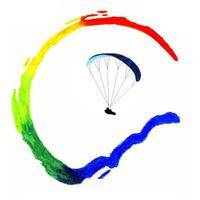
 Barberton Open Paragliding Competition 2016 will be held over seven days between 26 June 2016 and 2 July 2016 with no rest days. The competition is being hosted by the Lowveld Slope Soaring Club. Barberton is South Africa's premier winter flying site, as Porterville in the Western Cape is to the free-flying community for summer flying. Also, several South Africa paragliding Nationals have been held in Barberton.
Barberton Open Paragliding Competition 2016 will be held over seven days between 26 June 2016 and 2 July 2016 with no rest days. The competition is being hosted by the Lowveld Slope Soaring Club. Barberton is South Africa's premier winter flying site, as Porterville in the Western Cape is to the free-flying community for summer flying. Also, several South Africa paragliding Nationals have been held in Barberton. Local Rules

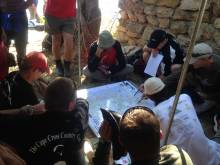
Barberton Paragliding Open 2016
Local Regulations
1. ENTRY
1.1. The Championships are open to all Member and Associated Member countries of the FAI who may enter any number of competitors not exceeding 110.
2. GENERAL COMPETITION RULES
2.1. REGISTRATION
On arrival, all pilots shall report to the Registration Office to have their documents checked and to receive supplementary regulations and information. The end of the official Registration period is considered to be the official start of the championship. The following are required:
2.1.1. Pilot qualifications
2.1.2. Evidence of competitor's nationality
2.1.3. Pilot's valid FAI Sporting Licence
2.1.4. Receipt for payment of entry fees by the closing date.
2.1.5. Satisfactory evidence of glider airworthiness
2.1.6. Certificate of Insurance as detailed on Entry Form
2.2. The Registration office will be open from 16:00 to 20:00 on Saturday 25 June 2016 and again on the morning of 26 June 2016 between 07:00 and 08:00. The closure of Registration is considered as the official start of the competition.
2.3. There will be a Pilot Briefing at the Meet Centre at 09:00 on Sunday 26 June 2016.
2.4. ONLY official recovery vehicles and vehicles with SAPPI permits obtained from the organiser will be allowed through the access gate to Lone Tree Hill.
2.5. ALL persons including pilots and spectators need to complete a SAPPI indemnity before permission to access Lone Tree Hill can be granted.
3. REST DAYS
There will be no official rest days.
4. COMPLAINTS AND PROTESTS
Pilots are invited to first settle any disputes with fellow pilots before lodging a complaint.
Should the dispute not be settled, a complaint may be made to the Meet Director or his deputy, by any pilot, in writing, to request a correction. It should be made with the minimum delay and it will be dealt with expeditiously.
If the complainant is not satisfied with the outcome the pilot may make a protest in writing to the Meet Director or his deputy.
The time limit for protests is 4 hours after the publication of the provisional task results or the results of the complaint, except that after the last contest task it is 1 hour. The protest fee is R400. It will be returned if the protest is upheld.
5. TAKE-OFF METHODS
5.1. Foot Launch from hill site. Take-off site is Lone Tree Hill. Details can be found on the Map.
6. RADIO TRANSCEIVERS.
There are only 2 frequencies that can be used during the competition. The first is the Flying and Safety frequency of 141.600MHz and the second will be the Retrieve and Coordinating frequency of 141.625MHz. There will be no “team frequencies” and pilots are not allowed to receive information or assistance via any communication. Radio frequencies are meant to be kept open for communication. Only frequencies allocated by the organisers may be used.
7. RETAKE-OFF
A competitor will be allowed a second re-launch to attempt the task within the stated take-off period. A failed take-off attempt or safety problem arising immediately after take-off which results in a landing will not count as one of the permitted number of take-off attempts. However, the pilot's take-off time will be taken from the time of the first take-off attempt if a ground start is specified. A re-launch pilot will not take priority over other pilots who have not yet launched at all. All pilots wishing to use the retake-off must land in the official “Turkey patch”. The official transport will leave “turkey” 45 minutes before the close of the window.
8. TASK PERIOD.
Times of the window open for take-off and times for the closing of the window, turn points and last landing will be displayed on the Taskboard on take-off. Any window extension policy will also be displayed on the Taskboard. The minimum period of time that the launch window will remain open for the day to be considered valid is 1 minute per pilot. Launch Window Extension Time will be announced at the task briefing and may only be used when the launch has been closed for safety reasons.
9. WIND SPEED
The maximum wind speed in which a task shall be at the discretion of the Meet director and the advice of the Safety committee.
10. SCORING
10.1. FS Software by FAI will be used with GAP latest scoring formula. Leadout Points and Drop task will be used as well as Arrival Time points.
10.2. It is the Pilot's responsibility to ensure that their tracklogs are submitted to LiveTrack24.com. Instruments/Trackers/Smartphones should be configured to transmit to LiveTrack24.com
10.3. In the event that there was an error in the transmission of the tracklog, it is the Pilot’s responsibility to download his/her tracklog in IGC format (with a valid G-Record) from their own flight instrument and upload it to the relevant task on LiveTrack24.com.
10.4. Pilots should ensure that they keep a copy of their tracklog in IGC format with a valid G-Record should the organisers request a copy for validation. Preferably this should be kept on your flight instrument but a downloaded copy would be acceptable as long as it contains a valid G-Record.
10.5. Team Scoring – Teams must be announced before the first task and consist of 4 pilots and all for pilots will score.
10.6. For the scoring purpose, guest pilots are counted as competing pilots.
10.7. Scoring a stopped task. When a task is stopped, the pilot’s scores will be determined from their GPS track log position 5 minutes before the time that the task was stopped. The Altitude of the pilot at this time will also be used in the calculations of the final points.
10.8. The map datum used will be WGS84 and the format for coordinates will be
ddd mm.mmm'
10.9. Scoring will be done according to the FS Software scoring programme, the version using the GAP 2015 scoring formula. GAP parameters will be discussed and decided at the Pilot Briefing. The following parameters are a guideline and must be voited in at the first briefing before task 1.
- Nominal distance = 35 kilometers
- Nominal time = 1 hour
- Number of pilots expected and goal = 20% of pilots that took off
- Goal score is calculated by time difference
11. THERMALLING
All pilots must read and understand Chapter 16, Thermalling Rules and Procedures of the FAI Sporting Code Section 7B
12. GLIDER RULES
12.1. Only certified gliders are allowed up to EN 926 or LTF 91/09. It is not permitted to modify the glider in any way, except for the length of the brake main-line.
12.2. The pilot must fly in the homologated weight range.
12.3. Uncertified sizes of a certified model that was available for sale earlier than 1st November 2011 will be permitted.
12.3.1. Registration database: On registration, pilots have to specify the model, size and the serial number of the glider to be flown during the competition.
12.4. Gliders will be checked after a complaint. In addition, the MD or TD can request that any pilot is checked. Every pilot must give his glider to the organisation for checking or comparing immediately upon any such request.
12.5. Checking methods:
12.5.1. Comparison with other gliders of the same model and size.
12.5.2. Verification from manufacturer in regards to line configuration
12.6. The TD will nominate a skilled person to check.
12.7. Two levels of Penalties may be applied:
12.7.1. 1st offence: Zero in the task.
12.7.2. 2nd offence: Disqualification from the competition.
13. WEIGHT CONTROL
13.1. Pilots should specify their weight on the website as well as the glider weight range. This weight can be checked at the event registration by the staff and corrected in the database.
13.2. Pilots may volunteer to check their weight (at registration or on take-off) and adjust their weight (before task briefing).
13.3. The pilots may be checked before taking off or after landing. If there is any doubt, their nominal weight will be checked again immediately.
13.4. If their all-up weight is out of their glider’s weight range, they will be penalised without tolerance on the measurement.
13.5. If they are carrying over 33 kg of equipment, including ballast, they will be penalised without tolerance on the measurement.
13.6. Penalties for weight infringement: 1st offence: Zero in the task, 2nd offence: Disqualification from the event.
14. PENALTIES
14.1. Cloud flying:
1st offence - zero for the day; 2nd offence - expelled from the competition
14.2. Wrong turn direction:
1st offence – warning; 2nd offence – 100 points then doubling for every offence after that.
14.3. Dangerous and aggressive flying
1st offence – warning; 2nd offence – 100 points then doubling for every offence after that.
14.4. Aerobatics after reaching the goal line:
1st offence – warning; 2nd offence – 100 points then doubling for every offence after that.
14.5. Top Landing after the launch window is open
1st offence – 100 points then doubling for every offence after that.
14.6. Failure to report back: Responsible for the costs of search and rescue.
14.7. Too much ballast:
1st offence – 100 points; 2nd offence – zero points for the task; 3rd offence – expulsion from the competition
14.8. Glider modification
1st offence - zero in the task; 2nd offence - disqualification from the competition
14.9. Weight infringement
1st offence - zero in the task; 2nd offence - disqualification from the competition.
14.10. Unpermitted vehicle on the Lone Tree Hill access roads or take-off area.
1st offence – R500 fine of the vehicle owner and 0 score for the day for ALL pilots in the vehicle.
2nd offence – disqualification from the competition of ALL pilots in the vehicle including the vehicle owner.
Airspace
How to get here

By Plane
Car
Accommodation
 If you have any questions about the place or need a wider list of accommodations please visit the town’s website http://www.barberton.co.za
If you have any questions about the place or need a wider list of accommodations please visit the town’s website http://www.barberton.co.zaArea Info & Activities
Selection and entry fee
- Pilot qualifications
- Evidence of competitor's nationality
- Pilot's valid FAI Sporting Licence
- Receipt for payment of entry fees by the closing date
- Satisfactory evidence of glider airworthiness
- Certificate of Insurance as detail on Entry form
Entry fee
Payments can be made to:
The entry fee includes
- T-shirt,
- map with turn points,
- regular transport up the mountain until 45 min before window closes,
- recovery along roads,
- medics on standby,
- prize-giving meal.


